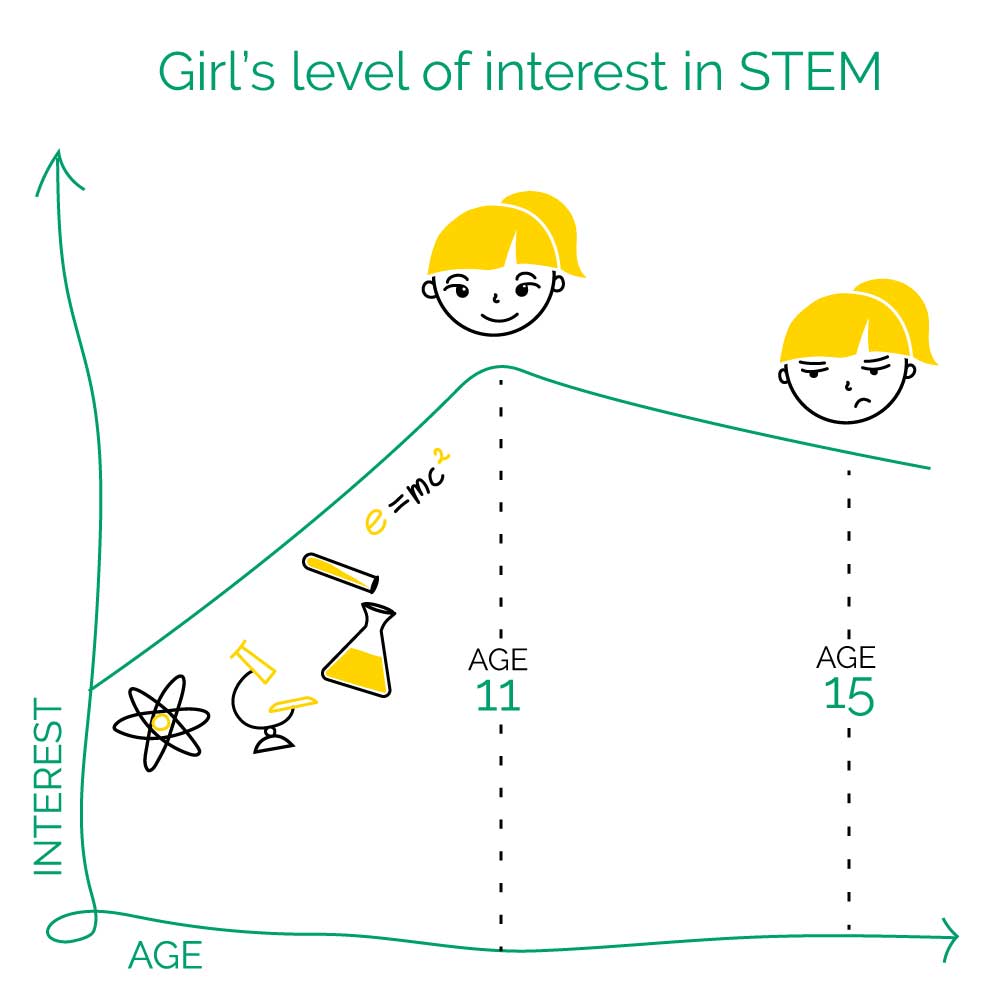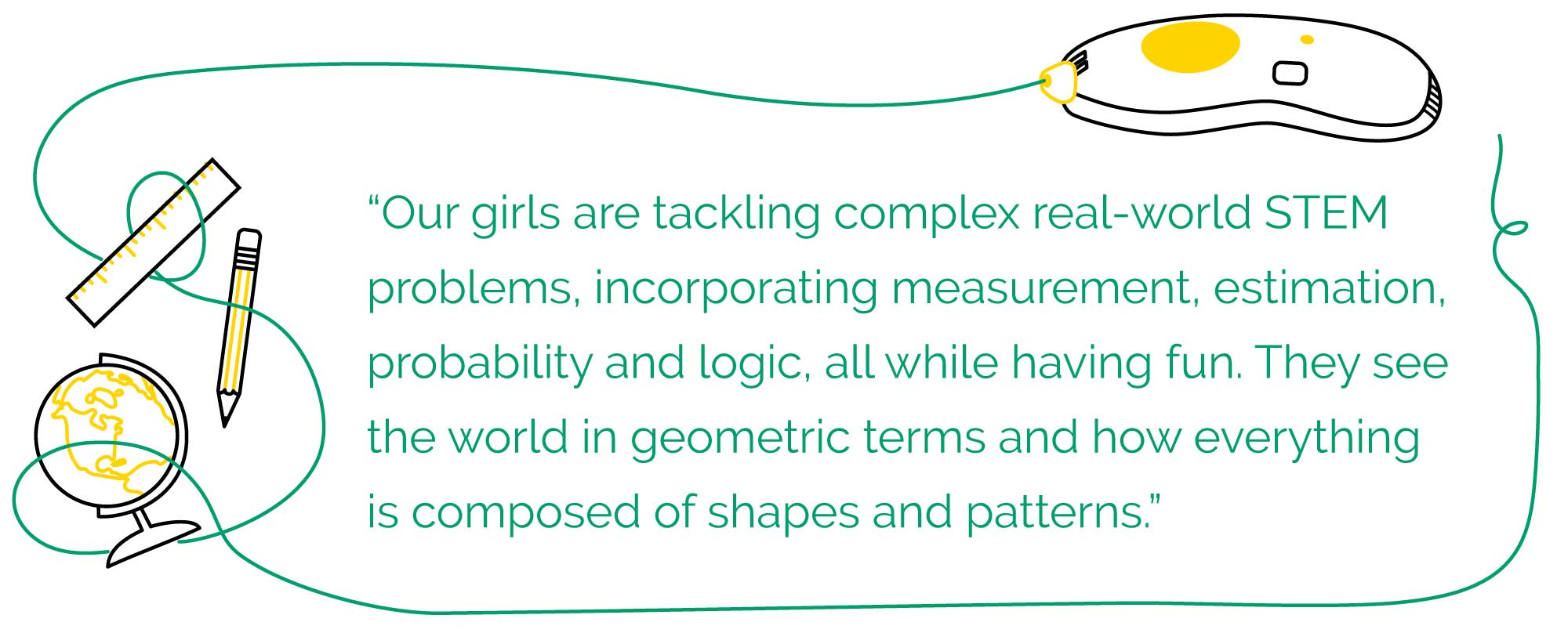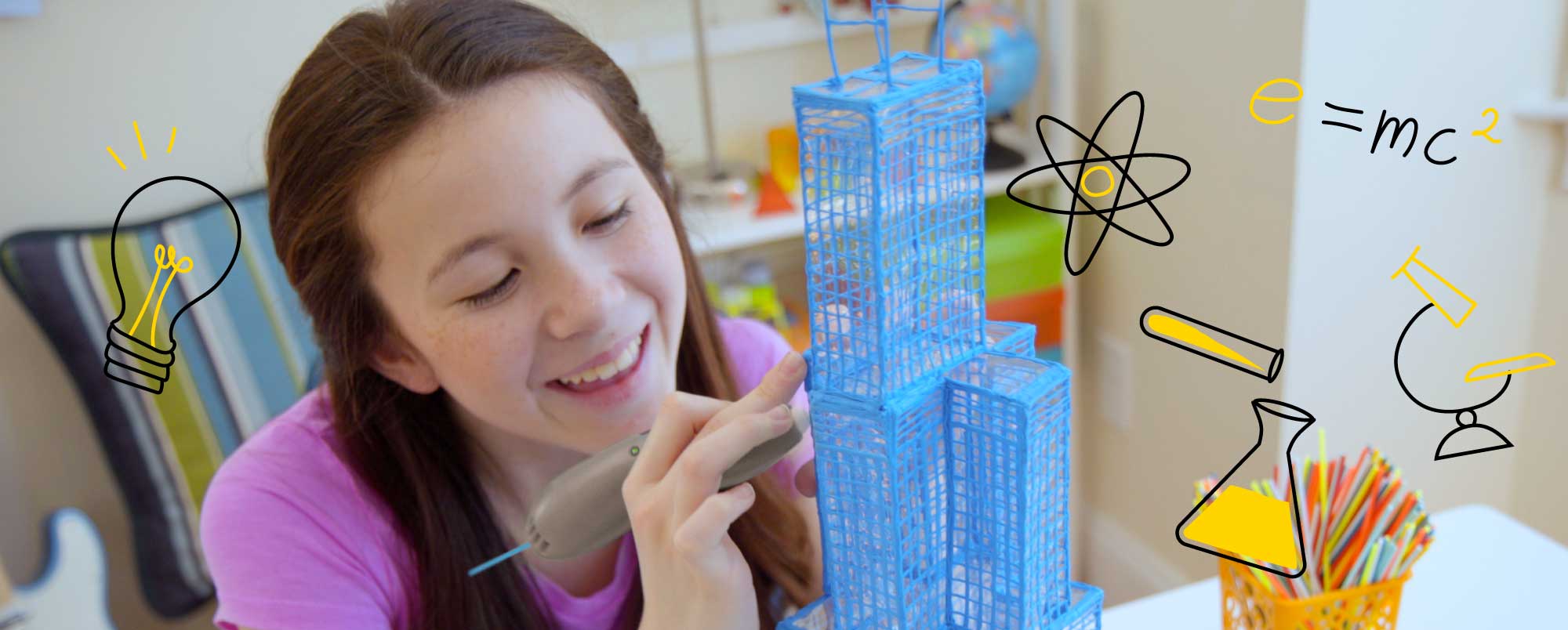While some of the girls in my elementary classroom will become engineers, designers, coders and software programmers, I don’t expect them all to become the next Millie Dresselhaus. No matter where their lives’ journeys lead them, the lessons they are learning in our classroom will serve them as critical thinkers, innovators, risk-takers, collaborators and leaders.
A recent Microsoft study indicated that a girl’s level of interest in STEM (science, technical, engineering, and math subjects) is on a steady rise until age 11, and then declines, most markedly, by age 15. I refer to these as the “Wonder” years, because I wonder why more people haven’t noticed and/or done something about it!

One of the best tools in my teaching arsenal is the 3Doodler Start. I’d like to “draw” upon my own success with the 3Doodler and share why it’s an important technology tool for all of your students, but especially your young girls. The 3Doodler is a way to inspire and engage our girls in STEM at an early age, while cultivating a platform that will sustain their interest throughout higher education and life. Learning with a 3Doodler nurtures creative thinking, as students design original works or repurpose information and ideas into new creations. It is an artistic form of expression that appeals to girls, while developing their voice not only within the design community, but in our world at large. Being a flexible, fluent thinker is a valuable commodity in any field or endeavor they may pursue.
Through using the 3Doodler in the classroom, students practice “design thinking”, a process of iteration, beginning with asking questions, brainstorming, planning, testing and retesting. This logical thought process is effective and visually concrete with the 3Doodler. A larger design problem is broken down into smaller, more manageable, sub-problems.

In our classroom, you will see girls designing plans, sketching models, drawing flowcharts, building, and playing with ideas not only in their minds, but with their hands, as well. They make predictions. They make inferences. They make repairs. They cultivate strong visual-spatial abilities, because their thought processes are being enacted right before their eyes. And all of this happens as they are “playing.” As girls enter adolescence with its rapid changes and choices, the dramatic effects of a strong thought process are witnessed by an improved ability to make important decisions, ones that may alter life outcomes.
With the 3Doodler, girls get practice in solving problems, making mathematics calculations and taking risks within open-ended challenges that allow for more than one solution.
They cultivate a tolerance for ambiguity and build perseverance. They develop what my grandfather used to refer to as “true grit”, a kind of spunk and resilient nature best cultivated through experience with failure. Psychologist, Carol Dweck, coined the term “growth-mindset” as the ability to reframe failure as an opportunity for learning. With the constant barrage of perfection displayed by the media, our girls are in danger of becoming complacent rather than risk making mistakes. The 3Doodler draws new pathways that embolden girls to dare, to try again, to go out on a ledge, knowing that the only true risk they face are the lessons lost by quitting.
Artful creation, such as with the 3Doodler, does not demand perfection, it celebrates inspiration born through determination. It makes us smile, even as we’re trying again and again.

And somewhere along the line, they begin to realize that they can solve most of life’s problems if they can see the “shapes” and “patterns” within it, which take the form of problems, ideas and choices. The 3Doodler nurtures the ability to problem-solve through analyzing, synthesizing and transferring knowledge to abstract learning. The 3Doodler is a valuable tool for all students, but for our girls, it is the shape of things to come.




